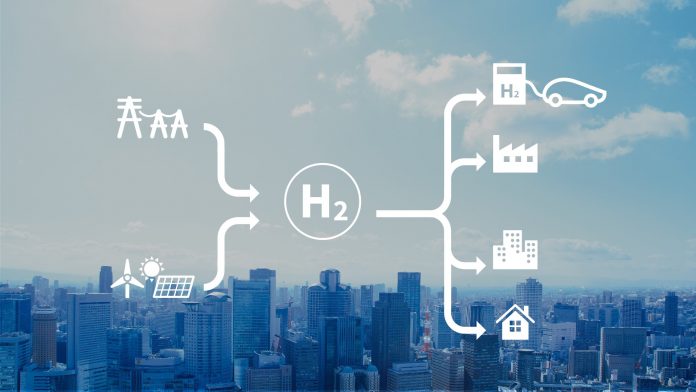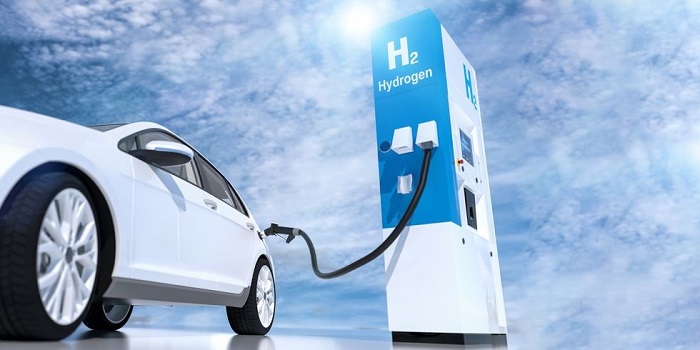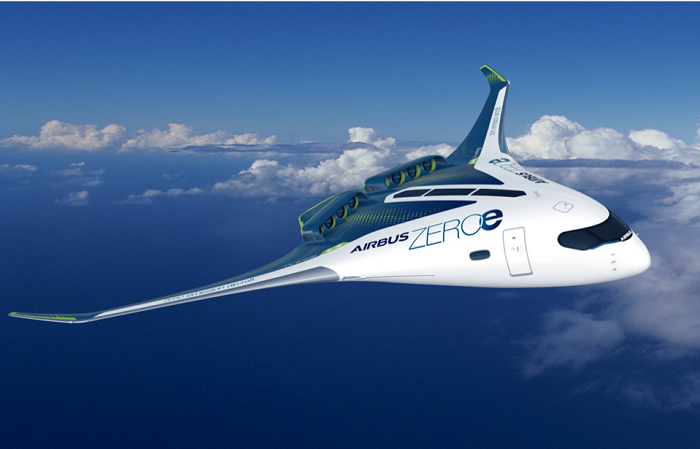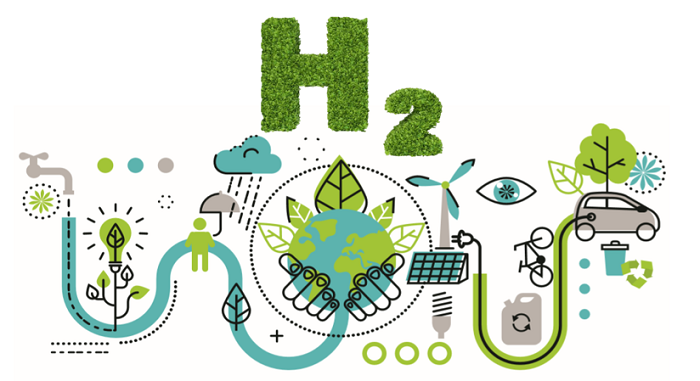How will we get around in the future? What could succeed crude oil and natural gas? One option already exists. It has three times the energy density of petrol. It’s available in huge quantities, in fact, there are even around 7 kilos in each of us and it has a low environmental impact; Hydrogen could be the ideal partner for a greener future. Today, hydrogen is already driving society and it has the potential for shaping a much greener future.
The EU and G8 countries have agreed that the future demands a stricter climate policy and have pledged to have co2 emissions by 2050. In this timeframe, the number of private cars worldwide will more than double to 2.5 billion, so demand for energy continues to rise while fossil fuels dwindle. The world cannot simply continue as before.
Hydrogen is a clean fuel source and burns without producing any greenhouse gases and any other harmful exhaust fumes. One sustainable solution to climate change is to extract the carbon from fuels and propellants, thereby reducing greenhouse gases released during combustion. Hydrogen, as a fuel source is an excellent solution. It can be turned into power electrochemically to in the fuel cell, this, in turn, will have the result in securing transport that is absolutely co2 free.
Hydrogen and its omnipresence.
Hydrogen was first discovered in 1766 by a British scientist named Henery Cavendish. By pure chance, he discovered that water consists of hydrogen and oxygen. hydrogen comes from the Latin Hydrogenium, which literally means making water. It is the first element in the periodic table and not for nothing. No other element is lighter than hydrogen and no other element is more abundant [in the universe. Hydrogen is pure energy. Perhaps the best example is the Sun, 92.1% of which is hydrogen. Here on earth, the odds are a bit different as hydrogen only prevails chemically bonded in molecules, and in order to produce pure hydrogen one needs to extract the hydrogen from the respective molecule. One way of doing this is with electrolysis, where electricity is used to split water into hydrogen and oxygen, but this requires a great deal of energy.
However, there is affordable hydrogen on the market, thanks to steam reforming. Hre steam is introduced to fossil fuel such as natural gas and heated to 830 degrees celsius. The mixture is then passed through ever-finer filters until only pure hydrogen remains. This is currently one of the most efficient ways to generate hydrogen. But, this process still uses our old and limited fossil fuels. Scientists are looking beyond the use of nonrenewable approaches like getting precious hydrogen out of water reducing the energy needed to generate hydrogen would be a huge breakthrough, like harnessing the power of the Sun.
Hydrogen Fuels transforming the industry.
Prior to the unprecedented outbreak of COVID-19, Japan was all set to bring an innovative example of sustainability before the whole world by lighting up the Tokyo Olympic torch during the relay event and ceremonial lighting of the Olympic cauldron by using hydrogen fuel. There are many applications beyond sporting events that are open to this clean, carbon-free energy source.
Automotive Applications
One of the most promising uses of hydrogen fuel cells is in the automotive industry. A number of major industry players, including BMW and Toyota, have already revealed plans to develop fleets of hydrogen-powered cars as the fuel source looks set to offer an additional, sustainable solution to electric power.
Electric vehicles are widely seen as a crucial way of reducing emissions and air pollution from road transport. However, accelerating uptake of electric power could risk adding pressure onto the grid, making it vital that vehicles are recharged at the right time of day.
Fuel cells could offer an alternative. As hydrogen cars produce electricity themselves, the vehicle doesn’t receive its power from a built-in battery that needs to be charged from an external power source. Like other e-cars, hydrogen vehicles can also recover braking energy, as the electric motors convert kinetic energy back into electric energy that is fed into the backup battery.
Hyundai was the first car company to make a mass-produced fuel cell in 2013 and it was ready to have a range of about 300 miles with a top speed of 100 miles per hour. Japanese companies have been all in on fuel cells for use in vehicles(FCEVs). Sometimes, to a fault, but the cost is dropping as the technology edges towards mass production.
Hydrogen fuel cells may make more sense for heavier vehicles traveling over longer distances like buses, trucks, and trains. For example, in 2016 in the US, there were 12000 hydrogen fuel cell-powered forklift trucks. Other than road and rail transportation, Airbus is counting on green hydrogen to propel its zero-emission aircraft by 2030.
While the idea to make everything electrical seems redundant to most researchers and scientists, green hydrogen can work as an extension cord for renewable energy. And to add to that, green H2 can be stored, so it can be used to compensate for renewable energy intermittency. This makes a lot of sense as it gives us flexibility and a more resilient grid when used in combination with renewable energy sources. That is why this clean fuel can be strategic as we clean up different sectors like heating and other fossil fuel-dependent applications.
Portability Ability
While smart devices are growing ever more advanced, they’re still limited by power. Technology and car companies are all too aware of the restrictions of lithium-ion batteries and while chips and operating systems are becoming more efficient at saving power, we’re still only looking at one or two days of battery life.
H2 fuel cells can power any portable device that uses batteries. Unlike a typical battery, the hydrogen fuel cell continues to produce energy with the continuous supply of fuel. This capability enables them to power a range of devices, including smartphones, laptops, and hearing aids.
In the defence sector, fuel cell technology has the potential to more than triple the flight time of drones or reduce the weight of the battery packs carried by soldiers in the field from around 15 kilograms to just one or two kilograms. In the middle of a disaster zone, these benefits could revolutionize the way emergency crews and military personnel respond to a situation.
Countries that are in Pole Position in the H2 race
Australia is perhaps, the world’s favorite renewable energy go-to place. Australia is developing a 5-gigawatt project to produce green hydrogen to export to Asian Countries. The mega electrolyzer will be powered by a combo of solar and wind and use desalinated water taken from the ocean.
The UK is planning to use its offshore wind power for a 5GW hydrogen production capacity by 2030.
Green H2 is also inspiring a vision for futuristic cities. Just like the Saudi Arabian Neom, a $500bn urban project, whose energy demand will come from renewable hydrogen.
China is planning to shape Wuhan as a hydrogen city, which will have up to 100 fueling stations by 2025.
Producing Green Hydrogen and Reducing Global Warming could be two sides of the same coin.
South Korean researchers have developed a catalyst made of cheap materials like magnesium to convert the two worst greenhouse gases, co2 and ch4, into hydrogen. Their climate-friendly process is called dry reforming.
Another cheap yet efficient solution is coming from Japan. The University of Tokyo made hydrogen out of light, organic waste, and a catalyst made out of rust and produced 25 times more it with this method than the conventional methods.
The average surface temperature of the planet has risen by almost one degree Celsius since the late 19th century, driven by an increase in carbon dioxide (CO2) emissions.
Finding alternatives to carbon-intensive fuel sources is critical to the future of our world, and engineers must demonstrate a commitment to innovation and problem solving to make the shift that will drive a more sustainable future.
Mayank Vashisht | Technology Journalist | ELE Times











